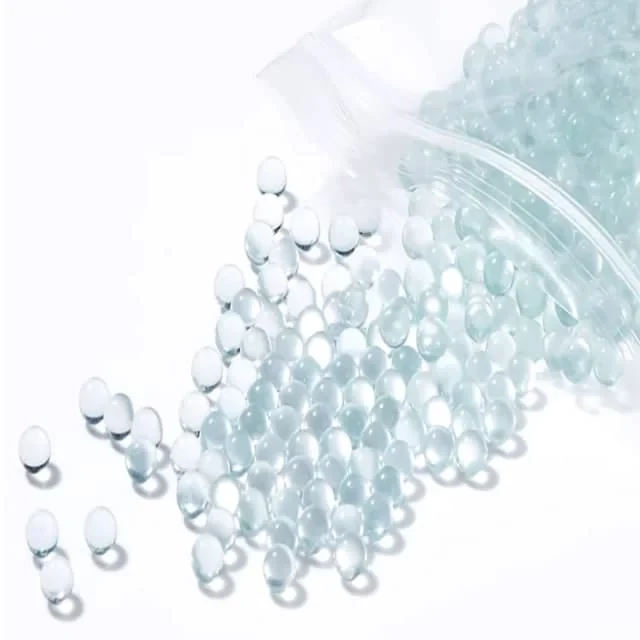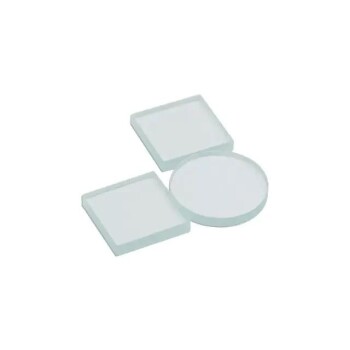
Glass material
Transparent Glass Oscillating Beads Laboratory Zeolite Glass Balls
Item Number : KTG-4
Price varies based on specs and customizations
- Product materia
- high-quality glass
- Product attributes
- Product attributes

Shipping:
Contact us to get shipping details Enjoy On-time Dispatch Guarantee.
Why Choose Us
Reliable PartnerEasy ordering process, quality products, and dedicated support for your business success.
Introduction
Glass beads are spherical particles with smooth surface and good finish. Made of non-alkaline soda-lime glass, it has good chemical stability and will not contaminate the processed metal. It can speed up cleaning while maintaining the processing accuracy between the original objects.
Detail & Parts


Technical specifications
| Diameter | Whole package weight | Packaging |
|---|---|---|
| 2.5mm | 18.68g | 1000 pcs/pack |
| 3mm | 39.92g | 1000 pcs/pack |
| 4mm | 81.58g | 1000 pcs/pack |
| 4.5mm | 123.57g | 1000 pcs/pack |
| 5mm | 159.39g | 1000 pcs/pack |
| 6mm | 281.06g | 1000 pcs/pack |
| 7mm | 451.38g | 1000 pcs/pack |
Applications
Glass vibration beads, also known as anti-zeolite transparent glass balls, are primarily used in laboratory settings for various applications. These beads are made from borosilicate glass, known for its high chemical and thermal resistance, making it ideal for use in environments where stability and durability are crucial. Below are the main application areas of glass vibration beads:
- Bioremediation Studies: Glass beads are used in reactors for bioremediation studies, where microorganisms are employed to remove pollutants from the environment. They help in studying the growth of pollutant-degrading microorganisms and optimizing conditions for effective remediation.
- Continuous Bioprocessing: In continuous bioprocessing, glass beads in reactors offer advantages such as improved productivity, reduced footprint, and enhanced process control. This is particularly important in biotechnology where long-duration processes are common.
- Anisotropic Glasses: Through Physical Vapor Deposition (PVD), glass beads can be used to create anisotropic glasses of low molecular weight for organic semiconductors. This process involves the controlled deposition of molecules to form a glass with anisotropic characteristics, enhancing charge carrier mobility.
- Laboratory Glassware: Due to their chemical and thermal resistance, glass beads are used in the manufacture of laboratory glassware such as beakers, vials, and pre-filled syringes. They are also used in the production of implantable medical devices and dental composite materials.
- Safety and Compatibility: Glass beads ensure chemical compatibility with various lab equipment, reducing the risk of unwanted degradation. They are also used in safety measures, such as in fume hoods or other forms of explosion-proof ventilation systems, to manage potentially hazardous vapors.
Designed for You
KinTek provide deep custom made service and equipment to worldwide customers, our specialized teamwork and rich experienced engineers are capable to undertake the custom tailoring hardware and software equipment requirements, and help our customer to build up the exclusive and personalized equipment and solution!
Would you please drop your ideas to us, our engineers are ready for you now!
FAQ
What Are The Main Types Of Laboratory Glassware?
What Are The Main Types Of Glass Substrates?
What Is The Primary Material Used For Glass Vibration Beads?
How Does Borosilicate Glass Benefit The Performance Of Vibration Beads?
How To Ensure The Service Life Of Glass Vibration Beads?
What Are The Applications Of Laboratory Glassware?
What Is Soda-lime Glass Used For?
What Is A Thermal Element?
What Are The Advantages Of Using Borosilicate Glass In Laboratory Glassware?
What Are The Advantages Of Using Sapphire Substrates?
How Does A Thermal Element Work?
How Does Borosilicate Glass Enhance The Efficiency Of Laboratory Processes?
Why Is Boroaluminosilicate Glass Suitable For Laboratory Glassware And Cooking Utensils?
What Are The Advantages Of Using Thermal Elements?
What Makes PTFE Glassware Suitable For Handling Corrosive Substances?
What Are The Applications Of Optical Quartz Glass Sheets?
What Are The Different Types Of Thermal Elements?
What Makes K9 Glass Special?
How Should Thermal Elements Be Calibrated And Maintained?
What Is A CaF2 Window Used For?
What Are The Properties Of Magnesium Fluoride Crystal Substrates?
What Is Silicon Used For In The Near-infrared Range?
What Are Glass Vibration Beads Used For In Laboratories?
4.7
out of
5
Exceptional quality and durability, perfect for our bioremediation studies.
4.8
out of
5
Superb chemical stability, no contamination issues in our lab.
4.9
out of
5
Highly satisfied with the thermal resistance, ideal for continuous bioprocessing.
4.7
out of
5
Great value for money, these beads have significantly improved our process control.
4.8
out of
5
Impressive compatibility with various lab equipment, minimal setup changes needed.
4.9
out of
5
These beads are a game-changer for anisotropic glass creation in our lab.
4.7
out of
5
Smooth surface and good finish, excellent for precision laboratory glassware.
4.8
out of
5
Reliable and safe, perfect for managing hazardous vapors in our fume hoods.
4.9
out of
5
Outstanding performance in bioprocessing, reduced our footprint significantly.
4.7
out of
5
These beads have enhanced the productivity of our organic semiconductor research.
4.8
out of
5
Excellent support for our implantable medical device production.
4.9
out of
5
Top-notch beads, highly recommend for any lab needing chemical and thermal stability.
REQUEST A QUOTE
Our professional team will reply to you within one business day. Please feel free to contact us!
Related Products

Float Soda-Lime Optical Glass for Laboratory Use
Soda-lime glass, widely favored as an insulating substrate for thin/thick film deposition, is created by floating molten glass on molten tin. This method ensures uniform thickness and exceptionally flat surfaces.
Related Articles

Common Instrumentation and Operations in Organic Synthesis
Overview of essential glass apparatus, distillation setups, recrystallization, and extraction methods in organic synthesis.

Solutions for Removing a Stuck Spatter Ball from a Rotary Evaporator
Guidelines and techniques for removing a stuck spatter ball from a rotary evaporator, including shaking, knocking, baking, freezing, and smashing.

Molecular Distillation: A Comprehensive Overview
Explains the principles and applications of molecular distillation, a technique for separating liquid mixtures based on molecular interactions and diffusion rates.

Infrared Spectroscopy Sample Preparation Operation Guide
A comprehensive guide on preparing samples for infrared spectroscopy analysis, covering gas, liquid, and solid samples.